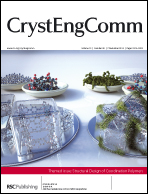Zeolitic imidazolate frameworks (ZIFs) are well-known for their thermal and chemical stability, as well as for their structural diversity reminiscent of those found in the realm of zeolites. Linker–linker interactions were recognized as essential in the discovery of new topologies through the choice of substituted imidazolates. However, the impact of the linker through modification of the imidazolate's substituents on the energy landscape of ZIFs remains to be rationalized. In this work, LiB-based ZIFs serve as model crystal structures to explore the impact of linker–linker interactions, varying the number and position of methyl groups. The study focuses on the characteristics of experimental and hypothetical structures studied by first principle DFT-D calculations, and further interpreted through QSPR and Non covalent interaction (NCI) analysis. We provide an empirical QSPR model accounting for linker and topology effects on the stability of the frameworks. Both the position and number of substituents on the imidazolate linkers have a profound impact on the energy landscape of ZIFs, reshuffling the ranking of stabilized versus less stable topologies that were otherwise almost isoenergetic with unsubstituted imidazolate. NCI analysis revealed that methyl substituents induce repulsive interactions within the boron-centred cluster that are compensated by attractive non-bonded interactions at the larger scale of the solid. Besides the kinetic factors at play in ZIF synthesis which are difficult to consider from a modelling perspective, our calculations show that thermodynamic considerations are at work, explaining the intractability of certain topologies with certain linkers. Our calculations provide insight into the magnitude of the thermodynamic penalties that must be overcome in order to form particular topologies and the energy scale that needs to be overcome to generate lower density materials – a target for many experimental groups. The identified dominant linker–linker interactions could be exploited to overcome the limitations of current synthesis techniques.

You have access to this article
 Please wait while we load your content...
Something went wrong. Try again?
Please wait while we load your content...
Something went wrong. Try again?


 Please wait while we load your content...
Please wait while we load your content...